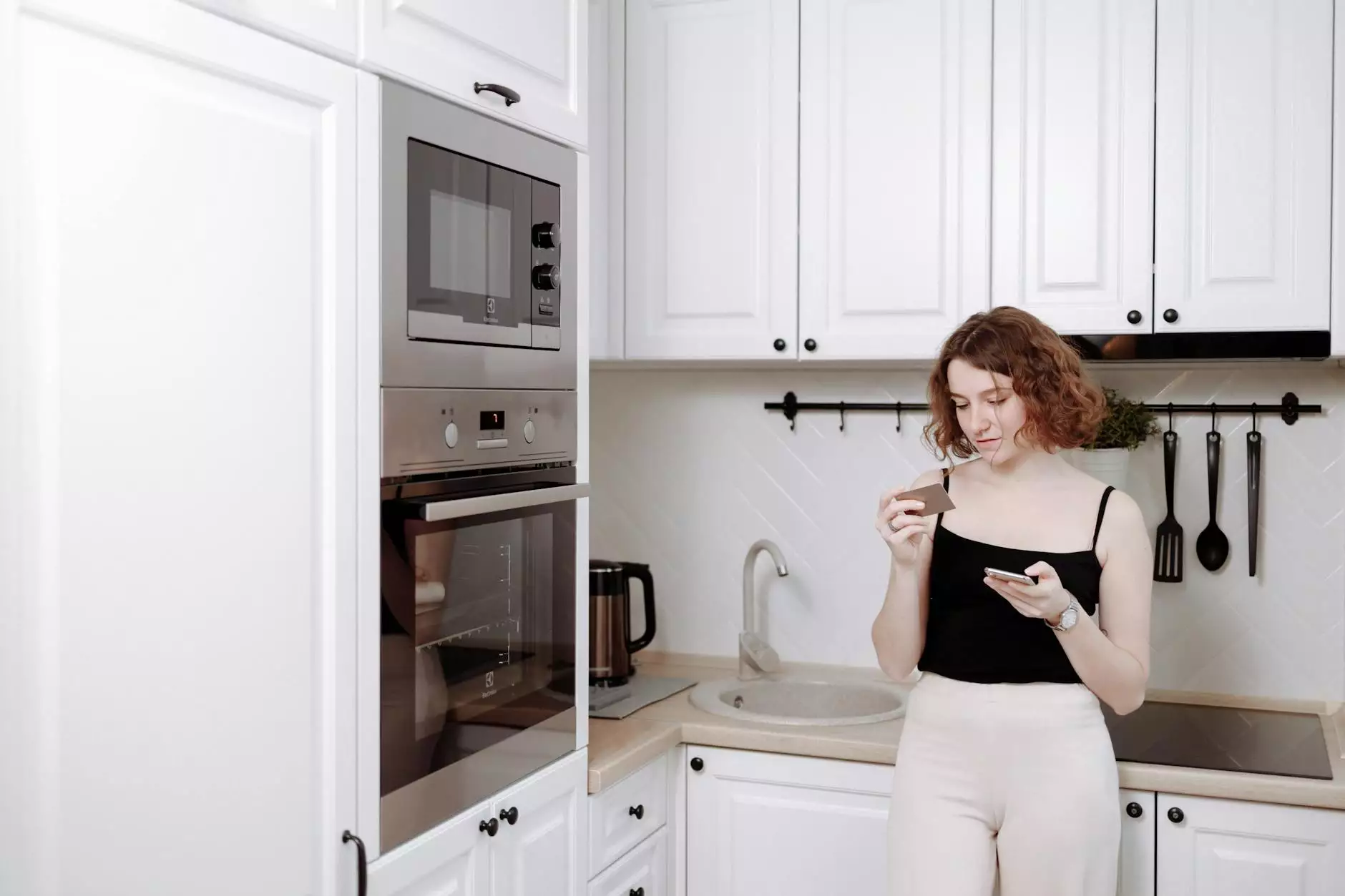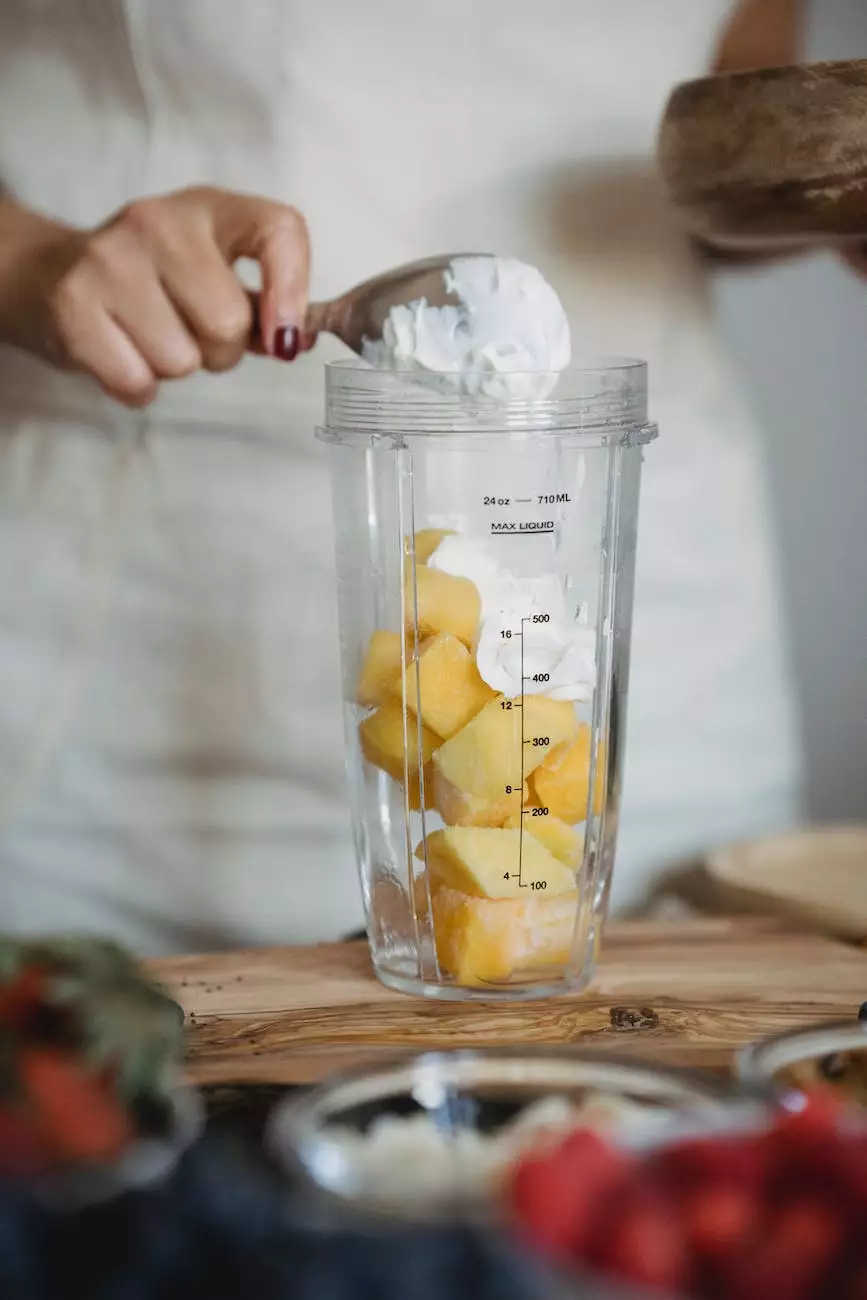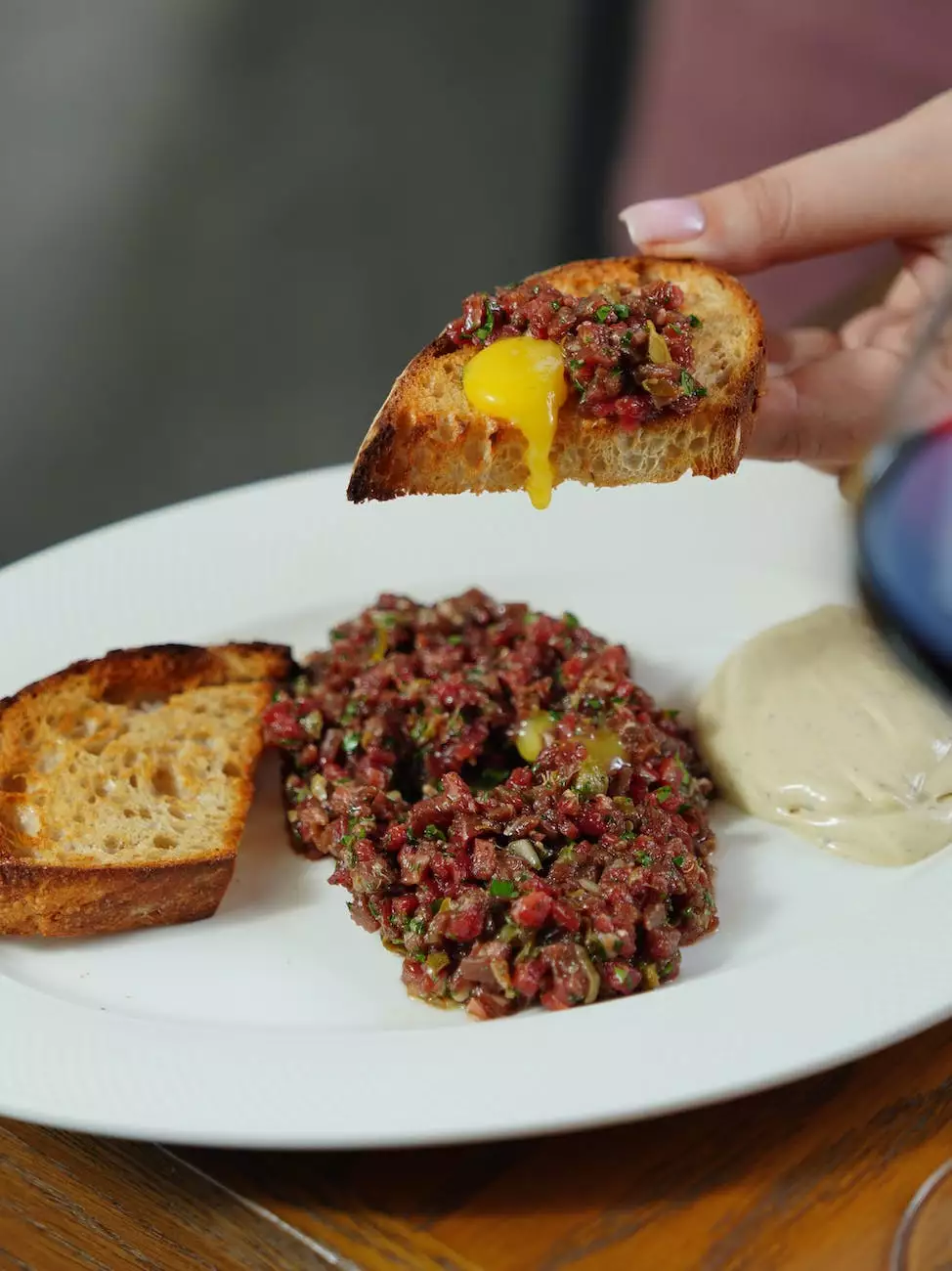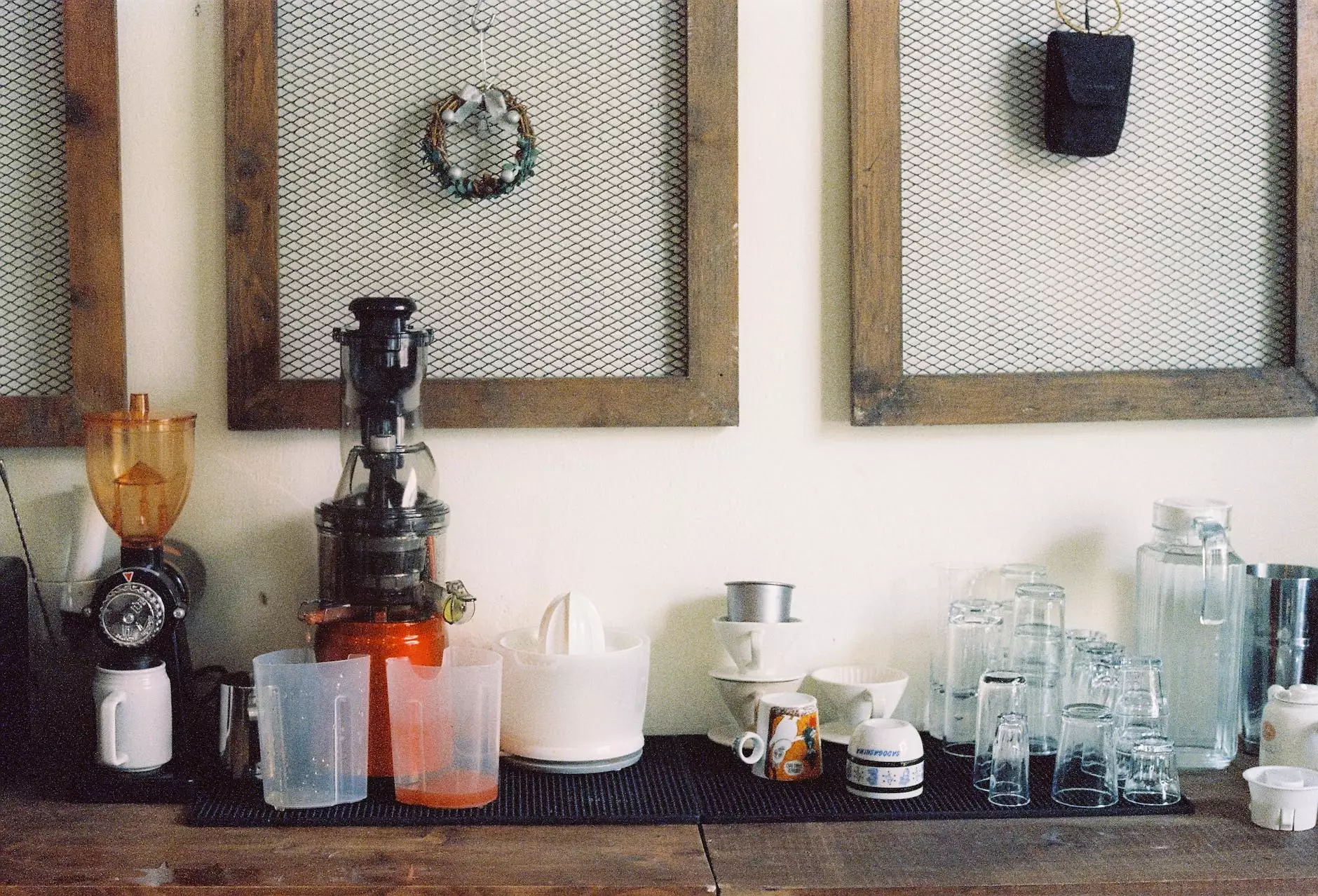The Ultimate Kitchen Blender Buying Guide

Introduction
Welcome to Awaken Your Wild, your go-to resource for all things kitchen-related. In this comprehensive buying guide, we will walk you through everything you need to know to make an informed decision when purchasing a kitchen blender. Whether you're a casual smoothie enthusiast or a culinary pro, we have got you covered!
Chapter 1: Understanding Blender Types
When it comes to kitchen blenders, there are several types to choose from, each offering unique features and functionalities. Let's take a closer look at the most common types:
1. Countertop Blenders
Countertop blenders are the most common type found in kitchens. They are versatile, powerful, and suitable for a wide range of tasks, including blending, pureeing, and crushing ice. With various speed settings and blending modes, countertop blenders can handle anything from silky smooth soups to chunky salsas.
2. Immersion Blenders
Immersion blenders, also known as hand blenders, are handheld devices with a blending blade attached to the bottom. They are perfect for quickly blending soups, sauces, and other liquid-based recipes directly in the pot or container. Immersion blenders are compact, easy to use, and a breeze to clean.
3. Personal Blenders
Personal blenders are compact blenders designed for individuals or small households. They often come with a detachable blending container that also doubles as a travel cup, making them ideal for on-the-go lifestyles. Personal blenders are great for making single-serving smoothies, shakes, and protein drinks.
Chapter 2: Key Considerations
Before diving into the world of blender options, it's important to consider the following factors to ensure you choose the right blender for your needs:
1. Power and Performance
The power of a blender is measured in watts, and the higher the wattage, the more capable the blender will be when tackling tougher ingredients. If you plan on blending tough greens, frozen fruits, or crushing ice regularly, opt for a blender with a higher wattage to ensure optimal performance.
2. Capacity
Blenders come in various sizes, and choosing the right capacity depends on your typical blending needs. If you frequently prepare large batches or intend to blend for multiple people, opt for a blender with a larger capacity. However, if you primarily blend single servings or have limited countertop space, a smaller-sized blender may be more suitable.
3. Speed and Control Settings
Having multiple speed settings and control options allows for greater precision while achieving the desired texture. Look for blenders with a range of settings to accommodate different recipes, such as blending, pulsing, and crushing. Additionally, some blenders offer pre-programmed settings for specific tasks like smoothies or ice crushing.
4. Blade Quality
The quality of the blender's blade directly impacts its blending performance. Look for models with durable, high-quality stainless steel blades that can handle a variety of ingredients without dulling or corroding over time. Blades with multiple prongs or special designs can enhance blending efficiency by creating vortexes that pull ingredients down towards the blade for smoother consistency.
Chapter 3: Additional Features
While the primary purpose of a blender is blending, many models come with additional features that can add versatility and convenience to your blending experience. Here are some features to consider:
1. Pulse Function
A pulse function allows for quick bursts of power, ideal for achieving precise textures and preventing over-blending. This feature is particularly useful when blending chunky salsas, mixing dough, or incorporating ingredients with varying textures.
2. Noise Level
If noise is a concern, look for blenders that are specifically designed to be quieter. Some models come with noise-reducing enclosures or advanced motor technology that minimizes noise without compromising performance. Perfect for early-morning smoothie enthusiasts or families with light sleepers.
3. Ease of Cleaning
No one wants to spend excessive time and effort on cleaning their blender after each use. Look for blenders with removable blades and dishwasher-safe parts for easy cleaning. Some models even have self-cleaning functions, making the cleaning process as simple as pressing a button.
Chapter 4: Choosing the Right Blender for You
Now that you have a solid understanding of blender types and key considerations, it's time to narrow down your options and choose the perfect blender for your kitchen. Here are some tips to help you make a confident decision:
1. Research and Compare
Take the time to research and compare different blender models. Read reviews, watch video demonstrations, and check for customer feedback to get a comprehensive understanding of the pros and cons of each blender.
2. Set a Budget
Blenders come in a wide price range, so it's important to set a budget before starting your search. Determine how much you are willing to invest in a blender and focus on finding models that fit within your budget while still meeting your desired criteria.
3. Visit a Store or Showroom
If possible, visit a store or showroom where you can see and handle blenders in person. This hands-on experience will give you a realistic feel for the blender's size, weight, and overall build quality.
4. Consider Longevity
Investing in a high-quality blender may cost more upfront, but it can save you money in the long run. A durable blender with a robust motor and sturdy construction is more likely to last for years, ensuring you get the most value out of your purchase.
Conclusion
Congratulations! You are now equipped with all the knowledge needed to choose the perfect kitchen blender. Remember to consider the blender type, key considerations, additional features, and your personal preferences during the selection process. With our comprehensive guide and your newfound expertise, you can confidently make a purchase that will elevate your culinary creations and awaken your wild in the kitchen!









